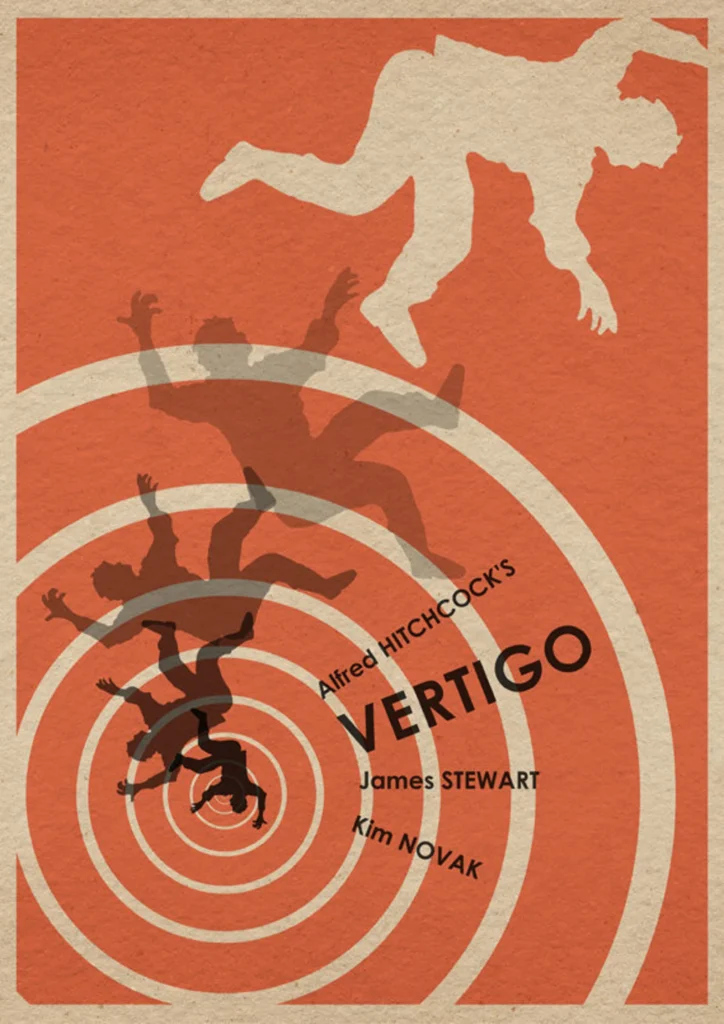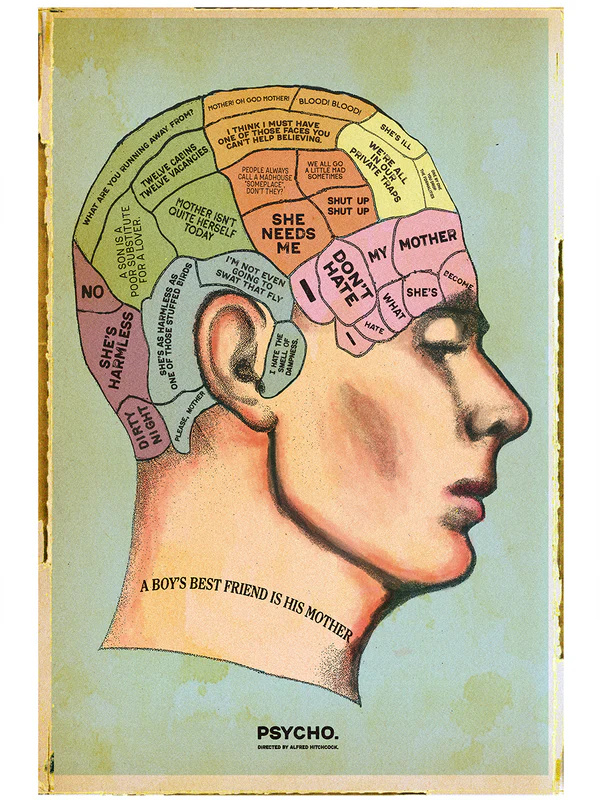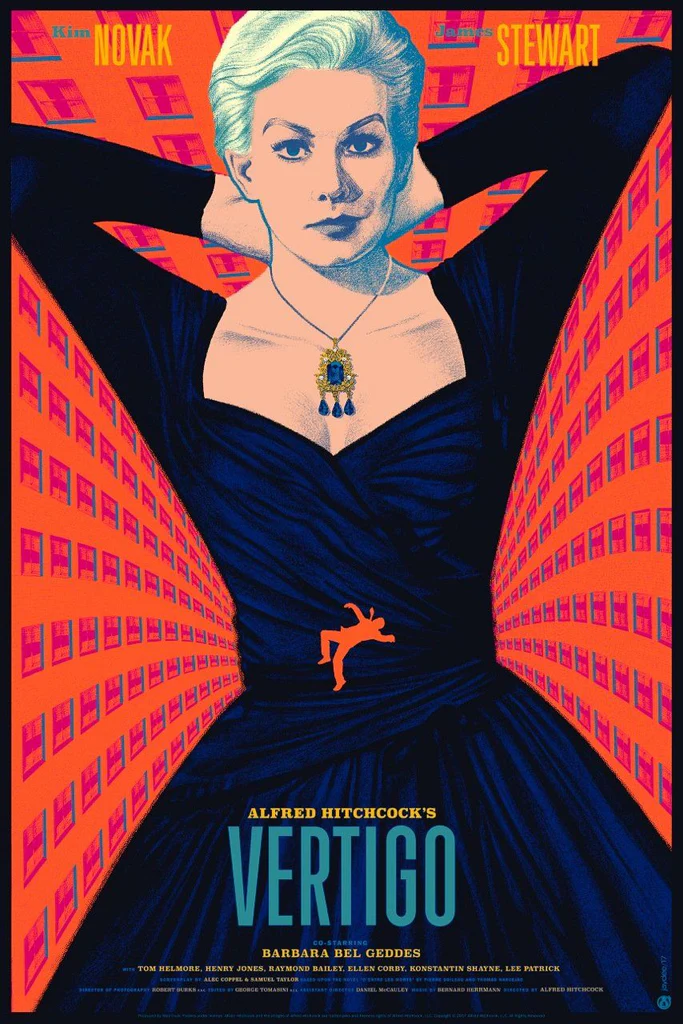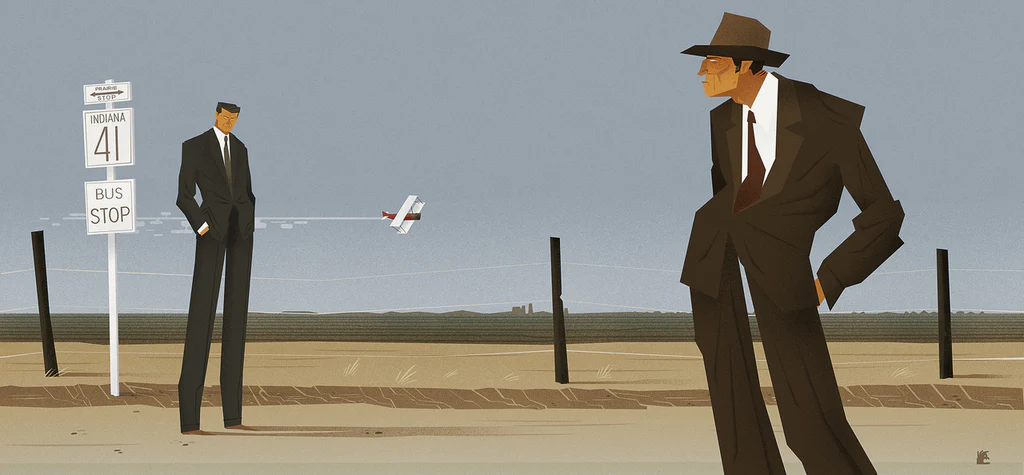Soggettiva Gallery presents from 27 August (until 30 September) “Vertigine Hitchcock”, a tribute to the English director who with more than 50 films has earned the nickname of “Master of the Shiver”, inextricably linking his name to the history of cinema. 125 years after Hitchcock’s birth, the exhibition retraces the highlights of his career with a selection of Alternative Movie Posters inspired by his greatest masterpieces.
Hitchcock’s influence is not limited to the cinema, but it extends into all fields of creativity (video games, comics, design, art, literature, fashion) until he leaves an indelible mark in pop culture, Not to mention the in-depth and very current representation of American society that he has returned with his films. While the artists whose works are on display must therefore confront themselves with the monumental artistic heritage of the English director, On the other hand, they cannot ignore the work of artists who before them have put their creativity at the service of Hitchcock’s boundless cinematic imagination: in this sense, the legacy of the American illustrator Saul Bass is essential, close collaborator of the director in several films.
HITCHCOCK THE INFLUENCER
From August 27 (until September 30) Soggettiva Gallery presents the exhibition “Hitchcock’s Vertigo” that collects more than thirty Alternative Movie Posters, inspired by his films. A tribute to the English director who revolutionized cinema with his ability to turn each of his films into a journey into the darkest depths of the human soul, revealing how true terror is hidden behind normality.
A kind of “Hitchcock style” recognizable across all artistic fields: from video games to comics and contemporarty art, not to mention the contaminations with the art of the surrealist painter Salvador Dalì – to design – the decor of many of his films’ interiors have been an inspiration to important interior designers; from literature – authors of the caliber of Stephen King and Patricia Highsmith recognize in Hitchcock a master of suspence and human psychology – fashionable – his actresses, from Kim Novak to Grace Kelly, from Tippi Hedren to Janet Leigh, have become true icons of style thanks to the refined dresses and elaborate hairstyles designed by Hitchcock in collaboration with the eclectic costume designer Edith Head, so much to influence over the years the collections of designers such as Alexander McQueen, Miuccia Prada and Dior.
A LOOK INTO AMERICAN SOCIETY
The films honored by the works on display reveal a social cross-section of American society, to which Hitchcock has always devoted a careful and very current analysis: emblematic two films such as “Rear Window” and “Psycho”: if the first one reveals the change taking place in a society that has lost all elements of common life, the second one addresses the theme of class struggle.
In the exhibition, graphic works by international artists who had to confront, on the one hand, the legacy of Hitchcock’s films and, on the other, that of those with whom he has measured himself before them: just think of the famous American illustrator Saul Bass, author of both the iconic poster of “Vertigo” and of the opening titles of this and other two milestones of Hitchcock’s cinema such as “North by Northwest” and “Psycho”. The irresistible tension that characterizes “Psycho” has unleashed the creativity of the Australian illustrator Nick Charge and the French graphic designer Melvin Mago, who have insisted on the more gothic aspects of the film. Whereas the mid-century art enthusiast Todd Alcott has played ironically with the psychiatric and “phrenological” aspect of the film, Sheila C chooses the horizontal format to create a destabilizing and at times “diabolical” portrait of Norman/Anthony Perkins.
A MATTER OF PERSPECTIVE
Inspired by “The Birds”, to visually recreate the sense of total vulnerability conveyed by the film, Adam Juresko with an abstract illustration, Max Dalton with a work of delirious and amusing madness, Olivier Courbet with a work that uses perspective by applying a style that mimics watercolor to create dynamism and the Italian Utopian Movies, whose experimental approach mixes human creativity with the technological potential offered by Artificial Intelligence. In addition, the painter from Marche, Veronica Chessa, pays her personal tribute to “The birds” with an acrylic painting that, through the iconic “boule de neige” configuration, materializes with skilful brushstrokes the very difficult atmosphere staged by Hitchcock (with a refined reference to the plot).
The vertigo felt in front of “Vertigo” is at the center of Jonathan Burton’s work, characterized by a two-dimensional stretch, while the dismay of James Stewart in “Rear Window” is taken by illustrator Zeb Love and the Brooklyn designer Katherine Lam who, playing with the elements of the plot, echo the theme on which the whole film revolves: are we watching our neighbour or is it the opposite?
UNESCAPABLE FEAR
It would not be an exhibition on Hitchcock if there was no film like “Nort by Northwest”, which inspired Joseph Chang, author of a quadrilogia of retro-workspop dedicated to Hitchcock and characterized by a mix between a modernist graphic style and a minimalist taste of oriental, and the Portland artist Dakota Randall, who has taken over the atmosphere of the film with Cary Grant through a classic approach and elegant sepia tones.
Two other films of fundamental importance such as “Rope” and “The Man Who Knew Too Much” are presented in a new and original key by the Belgian illustrator Jack Durieux, master in the use of perspective and in the balance of warm cold tones within the refined serigraphs with which he also pays tribute to “Psycho” and “Vertigo”. In addition, two examples of how Hitchcock was master in adapting literary works such as “The 39 Steps” and “Dial M for Murder” were reinterpreted by pop culture expert Benedict Woodhead – to whom a few black and white shapes are enough to bring to mind in a precise and punctual way the key elements of the film – and by the London designer Adam Simpson, Instead, it relies on a three-dimensional effect orchestrated on several levels to graphically render the steps that give the title to the film itself.
TWO CINEMATIC TRIOS
Finally, two groups of works, by the Florida artist Danny Haas and the original Flemish designer Mark Borgions, respectively, they compose two representative tryptics that are consistent in style – in the first case for their sought-after colour palettes and clever references to posters the originals of the films, the second for rarefied atmospheres and geometric lines – and format.
All the works on display are for sale.
INFO
SOGGETTIVA GALLERY
Via Pasquale Sottocorno 5/A, 20122 Milano
3357722437 – 3458463222 – 3342378116
Opening hours:
Monday: 15.30 – 19.45
Tuesday to Friday: 10 – 13.30 / 15.30 – 19.45
Saturday and Sunday: 10.30 – 13.30 / 15.30 – 19.45












